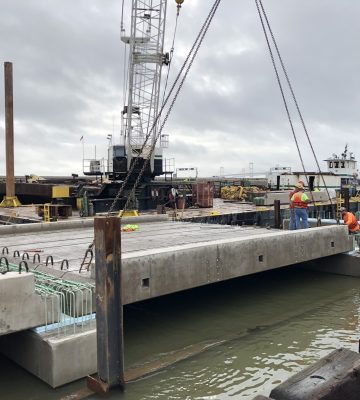H&H has led a joint venture team for multiple cycles of the $15 million multi-year contract to perform safety inspections, load ratings, and remedial design of the Maryland Transportation Authority’s facilities Statewide. In 2019, H&H led the effort to perform the inspections on MDTA facilities. H&H performed the inspection of the suspension span, through-truss span, and deck truss span portions on the William Preston Lane Memorial Bridge, approach span portions of the Harry W. Nice Bridge, and the deck truss spans of the Millard E. Tydings Bridge, as well as portions of the Baltimore Harbor and Fort McHenry Tunnel Systems.
Structural – The structural portion of these safety inspections consists of the annual inspections of MDTA’s 1500+ assets, including 308 workhorse bridges and the seven signature bridges, small structures, retaining walls, noise walls, sign structures, and high mast light poles, the Curtis Creek Bascule Span, fender and dolphin structures, toll facilities, drainage, and roadway safety associated therein. The structures are comprised of a wide variety of construction and material types, including suspension spans, steel deck truss spans, steel cantilevered deck truss spans, prestressed concrete arch, prestressed concrete beams, cast-in-place concrete, weathering steel, box girders, box culverts, arch culverts, and pipe culverts.
Mechanical & Electrical—H&H performed the mechanical and electrical inspection of Curtis Creek Bascule Span movable bridge operating machinery, lock machinery, and electrical systems, including MDTA’s first “in-depth” inspection, which involved disassembly and testing of mechanical and electrical systems. Electrical work was also performed on Bear Creek, the Bay Bridge Westbound Anchorage Pier, and the West Approach Loading Dock.
Civil – The H&H-led team inspected over 100 miles of pavement and right of way on the facilities.
Rope Access—H&H has utilized rope access techniques on several MDTA bridges. Using vertical drops, power chairs, and rigged lines, the teams inspected suspension cables, suspender ropes, top and bottom truss chords, and other superstructure elements. These techniques greatly reduced the number of lane closures and disruption to the public and expedited the inspections.










